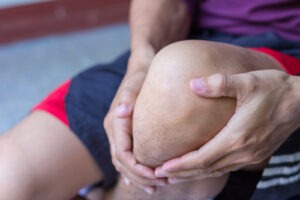 Knee orthopedic surgery addresses a variety of conditions that affect the knee joint, often targeting issues like severe pain, structural damage, or mobility limitations. When conservative treatments like medication, physical therapy, or lifestyle changes fail to provide adequate relief, surgical intervention becomes a viable option. This specialized field focuses on diagnosing, treating, and managing ailments related to the bones, ligaments, cartilage, and other components of the knee.
Knee orthopedic surgery addresses a variety of conditions that affect the knee joint, often targeting issues like severe pain, structural damage, or mobility limitations. When conservative treatments like medication, physical therapy, or lifestyle changes fail to provide adequate relief, surgical intervention becomes a viable option. This specialized field focuses on diagnosing, treating, and managing ailments related to the bones, ligaments, cartilage, and other components of the knee.
The human knee is a complex joint that bears significant weight and endures considerable stress through daily activities. This makes it particularly susceptible to injuries and degenerative conditions. Among the common issues requiring knee surgery are arthritis, ligament injuries (like ACL tears), and cartilage damage. These conditions can severely impact quality of life, making simple tasks like walking, climbing stairs, or even standing quite painful.
One of the primary objectives of knee orthopedic surgery is to restore function and alleviate pain. The process involves intricate planning and a thorough understanding of the patient’s specific condition. Various diagnostic tools, such as X-rays, MRI scans, and physical examinations, are employed to pinpoint the exact nature and extent of the problem.
Once a diagnosis is made, the orthopedic surgeon will discuss the most suitable surgical options. These options range from minimally invasive arthroscopic procedures to more extensive surgeries like total knee replacement. Each type of surgery has its own set of benefits and risks, which will be thoroughly explained by the surgeon.
The success of knee orthopedic surgery also hinges on the patient’s overall health, age, activity level, and willingness to follow post-operative care instructions. Patients are encouraged to be active participants in their treatment plans, as their cooperation and adherence to medical advice significantly contribute to the outcomes of the surgery.
Understanding the intricacies involved in knee orthopedic surgery can help patients make informed decisions and mentally prepare for the journey ahead. By setting realistic expectations and maintaining open communication with their healthcare team, patients can better navigate the complexities of surgical treatment for knee conditions. At the practice of Steven C. Thomas, MD and Donald W Pennington, DO, our board-certified surgeons specialize in orthopedic procedures in the Las Vegas area.
Getting Ready for Surgery
Preparation for knee orthopedic surgery starts with a comprehensive consultation with an orthopedic surgeon. During this initial meeting, the surgeon will review your medical history and evaluate the extent of your knee issue. This is the perfect opportunity to ask questions and address any concerns you may have. The surgeon will explain the potential surgical options, detailing the benefits and risks associated with each procedure.
Pre-surgery instructions are critical for ensuring a smooth and successful operation. You will likely need to undergo a series of tests, such as blood work, imaging studies, and possibly an EKG, to assess your overall health. These tests help the medical team plan the procedure and identify any potential risks.
Your surgeon will provide specific guidelines to follow in the days leading up to the surgery. These may include dietary restrictions, such as avoiding certain foods or drinks, and instructions on which medications to stop taking before the procedure. Adhering to these guidelines is essential for minimizing complications and optimizing surgical outcomes.
In addition to medical preparations, you should also plan for your recovery period. Arrange for someone to drive you home after the surgery and assist you during the initial days of your recovery. Stock up on necessary supplies, such as prescribed medications, comfortable clothing, and any mobility aids you may need.
It’s also beneficial to prepare your living space to accommodate your post-surgery needs. Make sure essential items are within easy reach and remove any obstacles that could pose a tripping hazard. Setting up a comfortable resting area with pillows and blankets can make your recovery more comfortable.
Following these preparatory steps diligently will help ensure that you are in the best possible condition for your knee orthopedic surgery. Taking an active role in your preparation and understanding the process can significantly contribute to a successful surgical experience.
Varieties of Knee Orthopedic Surgery
Knee orthopedic surgeries come in various forms, each tailored to address specific problems. Some of the most common types include ACL repair, knee replacement, meniscus repair, and cartilage restoration.
ACL repair focuses on reconstructing a torn anterior cruciate ligament, a crucial stabilizer of the knee. This procedure often involves using a graft from another part of the body or a donor to replace the damaged ligament. It’s commonly recommended for athletes or individuals with active lifestyles who have suffered significant ligament injuries.
Knee replacement is another prevalent procedure, particularly for those with severe arthritis or extensive joint damage. During this surgery, the damaged surfaces of the knee joint are replaced with artificial components, which can be made of metal, plastic, or ceramic. This operation aims to alleviate pain and restore mobility, making it a popular choice for older adults.
Meniscus repair is often necessary for those who have experienced a tear in the knee’s cartilage. This procedure can involve sewing the torn pieces back together or removing the damaged parts entirely, depending on the severity of the tear. Meniscus injuries are common among athletes but can affect anyone.
Cartilage restoration procedures aim to repair or replace damaged cartilage in the knee. Techniques such as microfracture surgery, autologous chondrocyte implantation, and osteochondral grafting are used to promote the growth of new cartilage, helping to reduce pain and improve joint function.
The selection of the appropriate procedure depends on several factors, including the patient’s age, overall health, and activity level, as well as the severity and location of the knee damage. The orthopedic surgeon will carefully evaluate these aspects to recommend the most suitable surgical approach for each individual case.
Additionally, some patients may require a combination of procedures to address multiple issues within the knee joint. The complexity of the surgery can vary, but the goal remains the same: to relieve pain, improve function, and enhance the patient’s overall quality of life.
The Surgical Procedure
On the day of your knee orthopedic surgery, the process begins with checking in at the hospital or surgical center. Once you arrive, the medical staff will initiate the preparation steps, which include reviewing your medical records and confirming the details of the surgery. You’ll change into a hospital gown and have an IV line inserted to administer necessary medications and fluids during the procedure.
Next, you will meet with the anesthesiologist to discuss and finalize the anesthesia plan. Options typically include general anesthesia, which puts you to sleep for the duration of the surgery, or regional anesthesia, which numbs the lower half of your body while you remain awake but sedated.
The surgical team will then escort you to the operating room. Here, the area around your knee will be thoroughly cleaned and sterilized to minimize the risk of infection. The surgeon will make precise incisions based on the type of knee surgery you are undergoing, whether it’s ACL repair, knee replacement, meniscus repair, or another procedure.
During the operation, the surgical team will employ advanced tools and techniques to address the specific issues within your knee joint. For instance, in an ACL repair, the surgeon will replace the torn ligament with a graft, while in a knee replacement, damaged joint surfaces are removed and substituted with artificial components.
Throughout the surgery, the anesthesiologist will continuously monitor your vital signs to ensure your safety and comfort. Upon completion of the procedure, the surgeon will close the incisions with sutures or staples and apply a sterile bandage.
Afterward, you’ll be transferred to a recovery area where the medical staff will observe your initial post-operative condition. This monitoring phase is essential to ensure that you are stable and to manage any immediate post-surgical symptoms, such as pain or nausea.
Healing and Rehabilitation
Healing and rehabilitation after knee orthopedic surgery are vital for a successful outcome. Your medical team will outline steps for wound care and prescribe medications to manage pain effectively. Following these instructions diligently will help minimize risks and promote a smoother recovery.
A cornerstone of the rehabilitation process is physical therapy. A physical therapist will collaborate with you to create a customized exercise regimen aimed at improving the strength, flexibility, and mobility of your knee. These exercises are crucial for regaining function and resuming daily activities. Consistent effort and patience are key to seeing significant progress.
You’ll likely begin physical therapy soon after surgery, starting with gentle movements to prevent stiffness and gradually advancing to more strenuous activities. The pace of your recovery will depend on several factors, including the specific surgery performed, your overall health, and your adherence to the prescribed rehabilitation plan.
In addition to physical therapy, it’s important to maintain a balanced diet and stay hydrated to support the healing process. Proper nutrition can expedite recovery and improve your overall well-being.
Regular follow-up appointments with your orthopedic surgeon will be scheduled to monitor your progress and address any concerns. These check-ins are crucial for adjusting your rehabilitation plan as needed and ensuring that you are on track for a successful recovery.
Staying informed about each stage of the healing and rehabilitation process allows you to set realistic goals and actively participate in your recovery. By following your medical team’s advice and committing to your rehabilitation program, you can achieve optimal results and enhance your quality of life.
Contact Surgeons Dr. Thomas, Dr. Pennington, and Dr. Limtong at the Knee and Shoulder Institute in Las Vegas, NV to Schedule an Appointment:
If you would like to schedule an appointment or learn more about the Knee and Shoulder Institute procedures & treatments,contact the office today click here.
Serving patients from and around greater Las Vegas, Lake Havasu, Bullhead City, Mesquite, Pahrump, Nevada
 Musculoskeletal pain and injury are common—but not every ache needs a trip to an orthopedic surgeon. So how do you know when to see a specialist? In this blog, we outline key signs and symptoms that suggest it’s time to consult an orthopedic expert. At the practice of Steven C. Thomas, MD and Donald W Pennington, DO, our board-certified surgeons specialize in orthopedic procedures in the Las Vegas area.
Musculoskeletal pain and injury are common—but not every ache needs a trip to an orthopedic surgeon. So how do you know when to see a specialist? In this blog, we outline key signs and symptoms that suggest it’s time to consult an orthopedic expert. At the practice of Steven C. Thomas, MD and Donald W Pennington, DO, our board-certified surgeons specialize in orthopedic procedures in the Las Vegas area.
 Navigating orthopedic care can raise many questions. Here, we answer some of the most frequently asked questions about orthopedic health, injuries, and treatments.
Navigating orthopedic care can raise many questions. Here, we answer some of the most frequently asked questions about orthopedic health, injuries, and treatments.  Physical therapy (PT) is a cornerstone in the recovery process for sports injuries. Whether you’re an elite athlete or a weekend warrior, proper rehabilitation ensures a safe return to activity while minimizing the risk of reinjury. In this blog, we discuss how physical therapy supports healing, restores function, and helps athletes regain their performance.
Physical therapy (PT) is a cornerstone in the recovery process for sports injuries. Whether you’re an elite athlete or a weekend warrior, proper rehabilitation ensures a safe return to activity while minimizing the risk of reinjury. In this blog, we discuss how physical therapy supports healing, restores function, and helps athletes regain their performance.  Ligaments play a vital role in stabilizing joints, and in the elbow, the ulnar collateral ligament (UCL) and radial collateral ligament (RCL) are key to maintaining proper movement and function. Injury to these ligaments—whether from overuse, trauma, or sports—can result in elbow instability, pain, and limited function. In this blog, we explore how UCL and RCL injuries occur, their symptoms, and treatment options.
Ligaments play a vital role in stabilizing joints, and in the elbow, the ulnar collateral ligament (UCL) and radial collateral ligament (RCL) are key to maintaining proper movement and function. Injury to these ligaments—whether from overuse, trauma, or sports—can result in elbow instability, pain, and limited function. In this blog, we explore how UCL and RCL injuries occur, their symptoms, and treatment options. 


